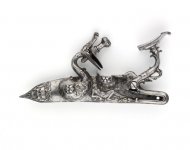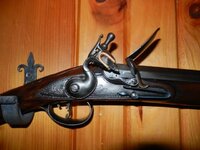LuckOfTheIrish
Jr. Member
Recently I have been getting into some Revolutionary War artifacts and one of these pieces is still stumping! Can anyone help me with this British Crown motif that I found recently. All of the other artifacts all date to the Rev War (and I have found almost 0 trash) so it is definitely from that time period in my opinions. What do you think?
The picture also has my half of a British 53rd Regiment buckle from the same site.
The picture also has my half of a British 53rd Regiment buckle from the same site.
















 (our posts crossed) SOLVED.
(our posts crossed) SOLVED.


